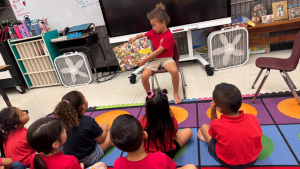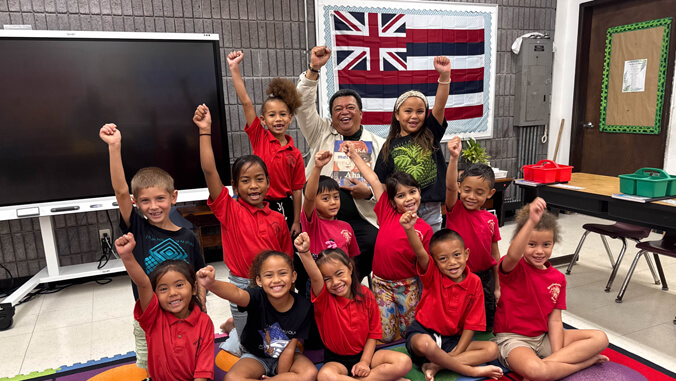
Ka Haka ʻUla O Keʻelikōlani College of Hawaiian Language at the University of Hawaiʻi at Hilo has partnered with the United Nations Educational, Scientific and Cultural Organization (UNESCO) to publish a Hawaiian adaptation of the internationally acclaimed children’s book What Makes Us Human? The book, titled I Kanaka Mai I Ke Aha?, was released on February 21 in recognition of UNESCO’s International Mother Language Day, aligning with the ongoing International Decade of Indigenous Languages (2022–2032) co-led by UNESCO.

“The publication of I Kanaka Mai I Ke Aha? in Hawaiian is another important step in reaffirming our language on the global stage,” said Kaʻiu Kimura, director of UH Hilo’s College of Hawaiian Language. “It not only contributes to our children’s literacy and language development but also reinforces the significance of ʻōlelo Hawaiʻi (Hawaiian language) as a living language, capable of engaging with the world.”
Originally written in Portuguese by Brazilian-American author and linguist Victor D. O. Santos, the book is structured as a riddle, guiding children through the significance of language as a defining element of humanity. Hawaiian is the first Native American language and the first Pacific Island language in which the book has been published.
A playful language
The Hawaiian adaptation was crafted by Kaʻiuokalani Damas, an assistant professor of Hawaiian and Hawaiian studies at UH Hilo, in collaboration with his wife Kauʻilani, a teacher at Nāwahīokalaniʻōpuʻu Hawaiian medium school. The couple is raising their daughters as first-language Hawaiian speakers.
“Hawaiian is a playful language, rich with wit and double meanings,” Damas explained. “This book highlights the critical role of language in human identity while introducing young Hawaiian speakers to the joy of riddles and wordplay.”
Language preservation

The Hawaiian edition joins other Indigenous language versions, such as Mapuzungun of the Mapuche in Chile and Hñähñü of the Otomí in Mexico. UNESCO’s Indigenous Languages Decade highlights the urgency of language preservation.
UH Hilo’s Hawaiian Language College leads national revitalization efforts through the National Native American Language Resource Center. Hawaiʻi’s 4,000+ students in Hawaiian medium schools mark a dramatic resurgence from fewer than 50 child speakers just 40 years ago, making it the largest initiative of its kind for a Native American language.
Early literacy is critical in growing the next generation of Hawaiian speakers. Hawaiian medium preschoolers learn to read two years earlier than their English-medium peers through the Hakalama method, a syllable-based system designed for Hawaiian’s unique structure. This approach fosters strong literacy skills and long-term fluency.
The final production of I Kanaka Mai I Ke Aha? was completed through Hale Kuamoʻo Hawaiian Language Center at UH Hilo. Copies are available for pre-order at bit.ly/preorderIKMKA.


